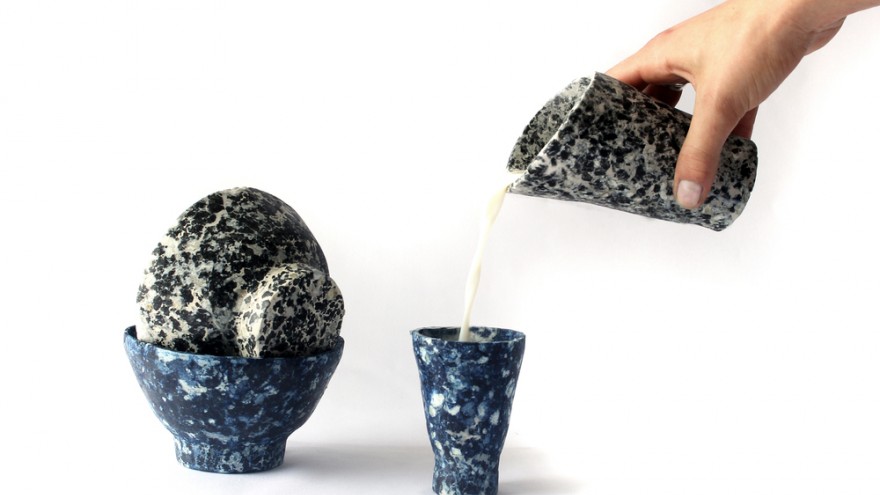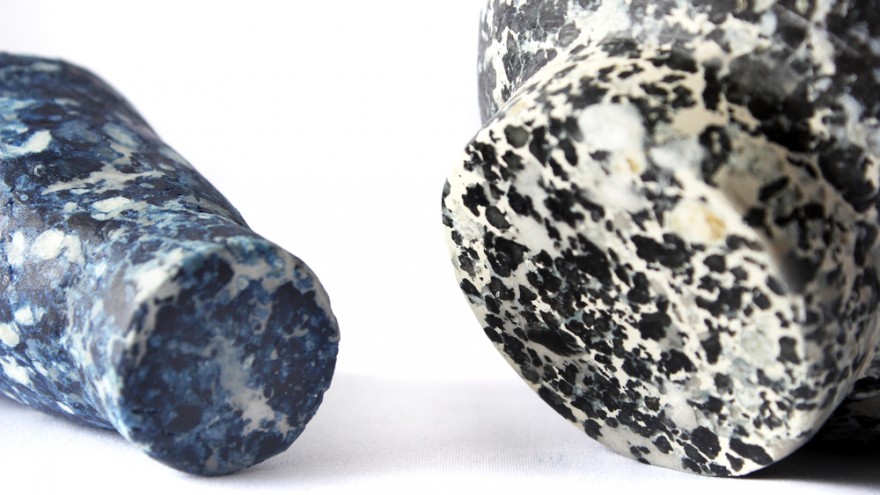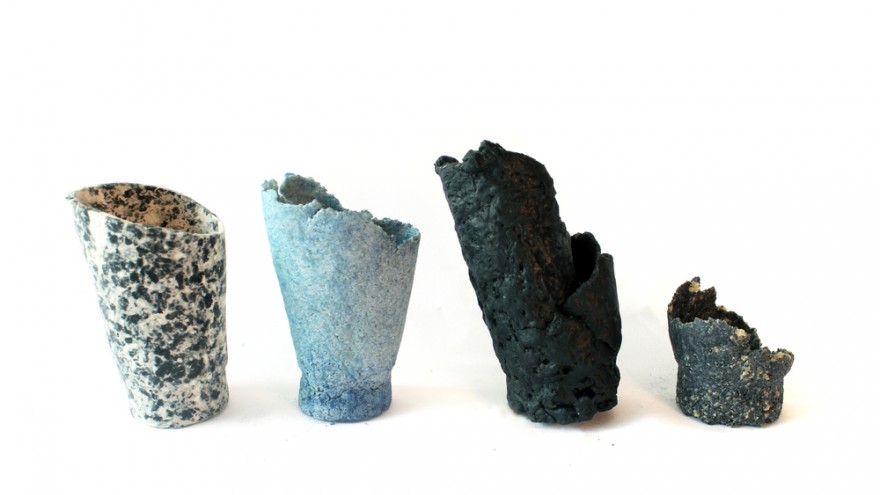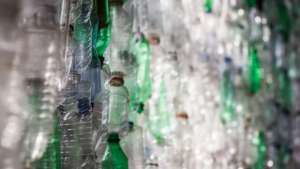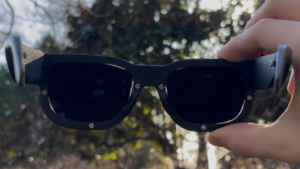From the Series
Using cow’s milk, Royal College of Art graduate Tessa Silva-Dawson designed a range of vessels using an alternative to one of the Earth’s most harmful pollutants: plastic. Her 100 per cent biodegradable plastic vessels are made using a natural plastic extracted from skimmed milk. The vessels form part of her graduate project called, Protein.
Silva-Dawson’s plastic is created using Casein formaldehyde, a plastic of natural protein origin, made from organic substances such as milk or vegetable products such as soybeans or wheat. The plastic is produced when milk curds are separated from whey with the help of an enzyme, similar to the cheese-making process.
When coated with a plant based bio-resin, the plastic is fully waterproof and UV stable. Silva-Dawson said that the plastic could be used as long lasting containers for drinks and food. When left in its natural state, the material is also able to decompose with other food waste.
Silva-Dawson said that her plastic differs from the original version created in the 1900s: “Originally, the Casein plastic was made from powdered milk, not liquid milk. It was also hardened in toxic formaldehyde, which has been avoided in this project in order to render the material completely natural,” she explains.
Silva-Dawson’s interest in the Casein made plastic was sparked when milk prices in the United Kingdom dropped below the price of bottled water. “Proposing the application of this raw material for products other than foodstuff could prove effective in boosting the dairy industry,” she says.
“Moreover, skimmed milk is wasted in large quantities due to the separation process required to make butter and cream. The project, therefore, does not suggest a mass increase in dairy production, but instead proposes the utilisation of a commonly wasted and widely available raw material”
Casein was produced in the early 20th century as an alternative to tortoise shells and ivory. Production faded once polymers derived from oil developed.
Going forward, Silva-Dawson hopes to explore the commercial viability Casein plastic. “In order to scale up this process, the material would need to be tested through industrial plastics manufacturing equipment. With the combination of machinery from the cheese-making industry, paired with plastics machinery, a production line could be easily assembled to produce the material,” she says.

